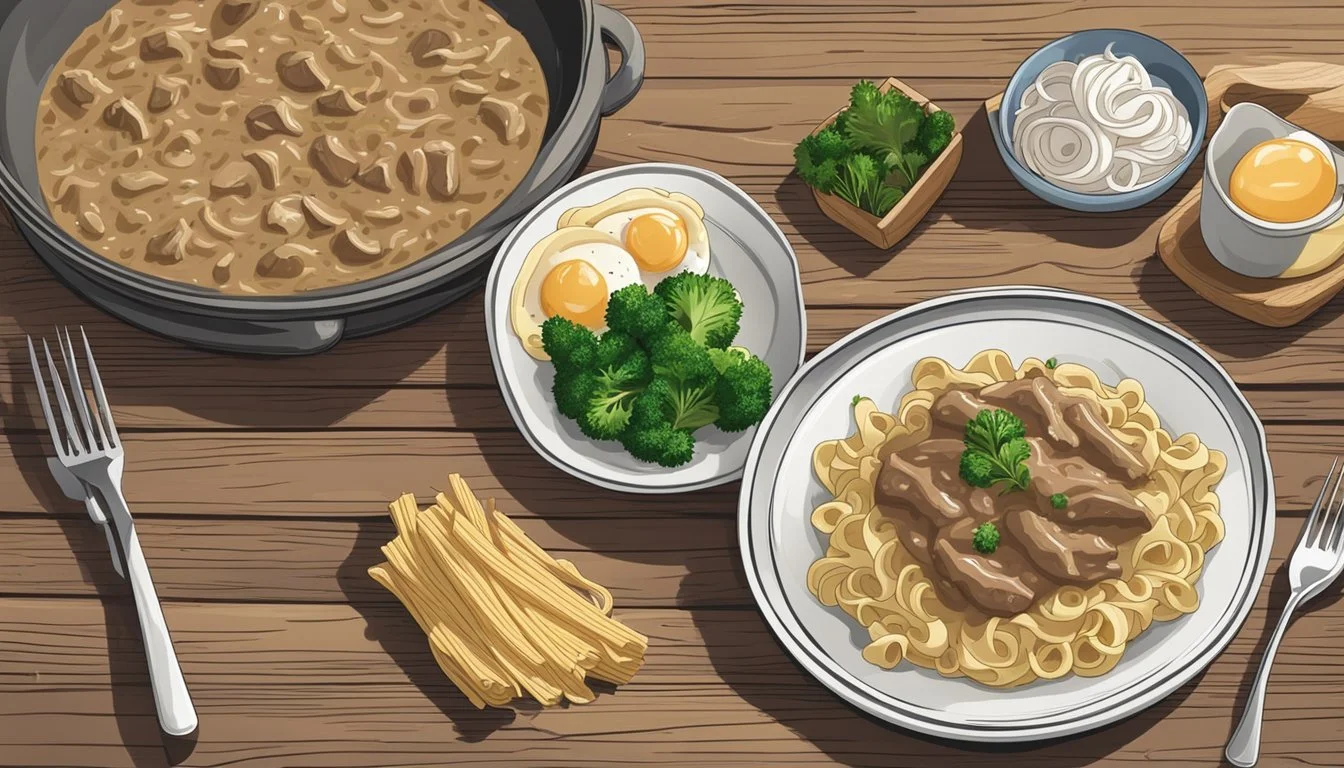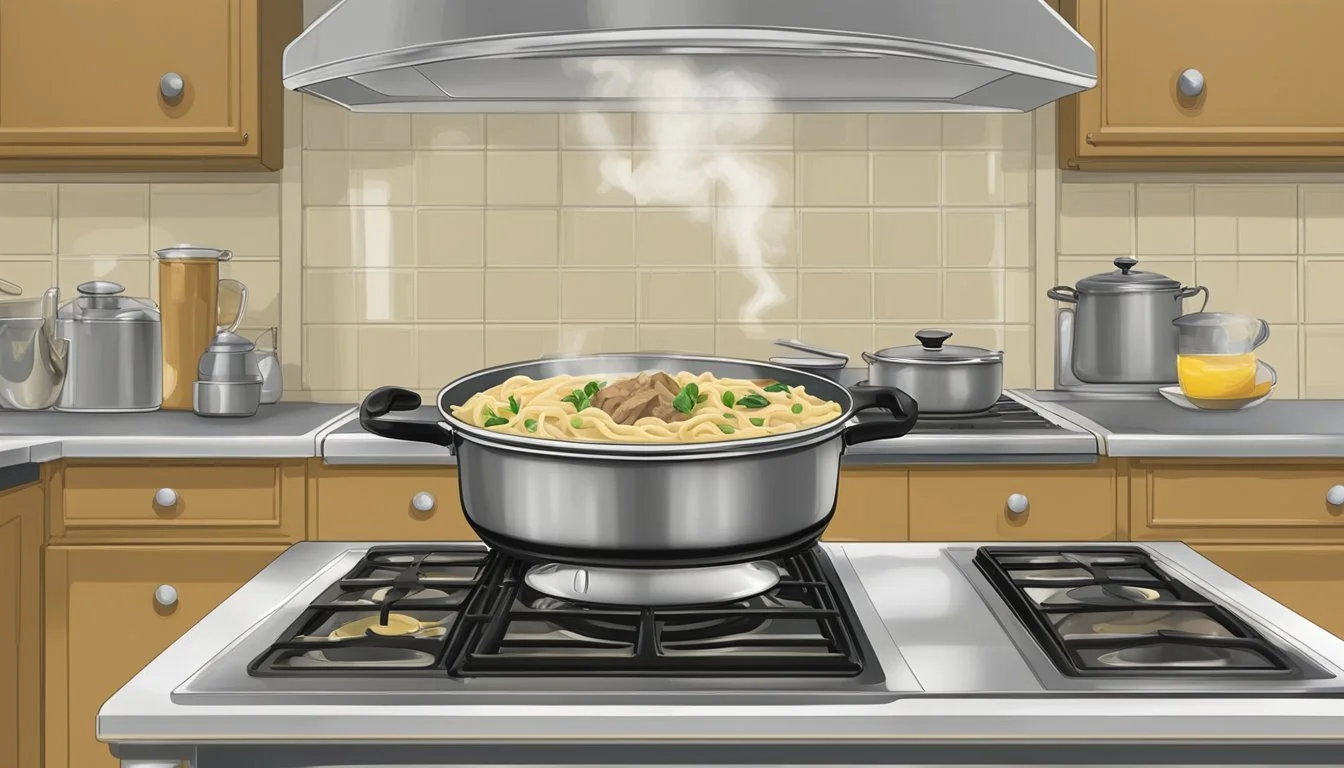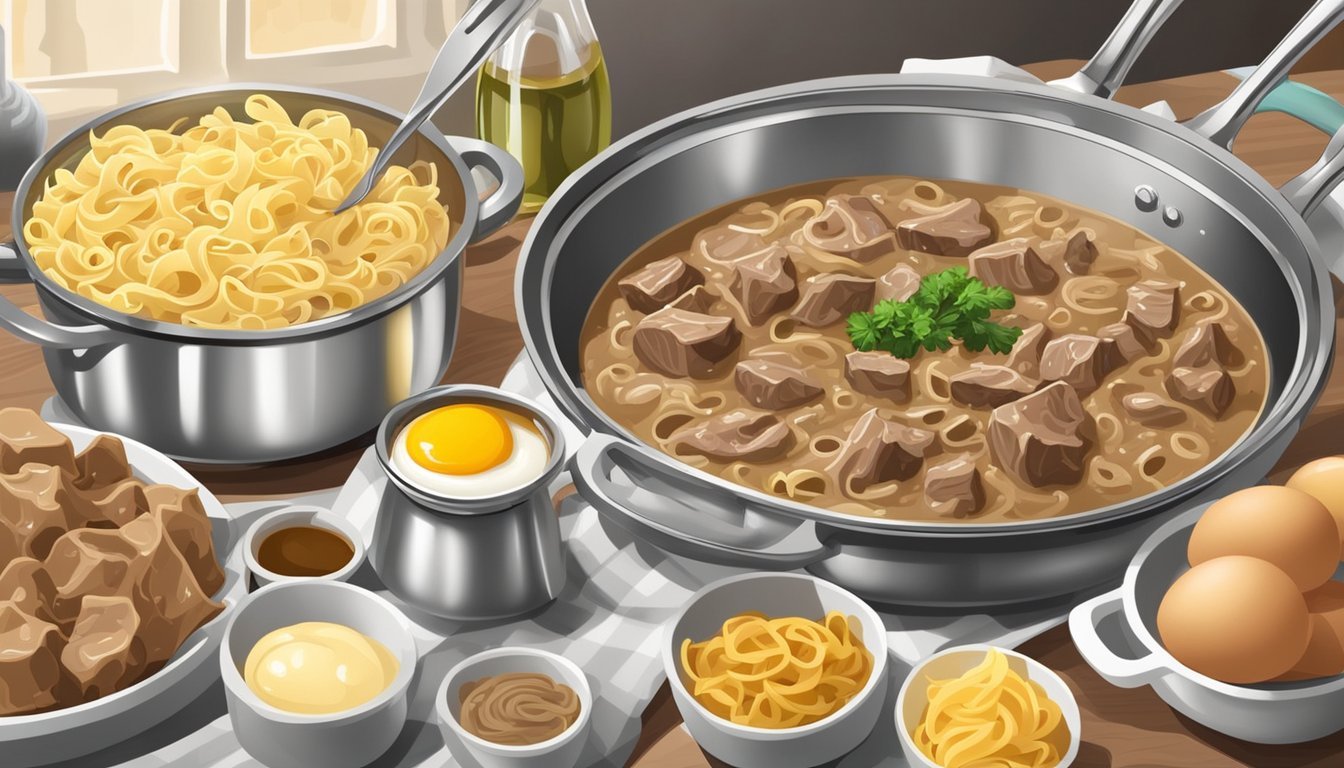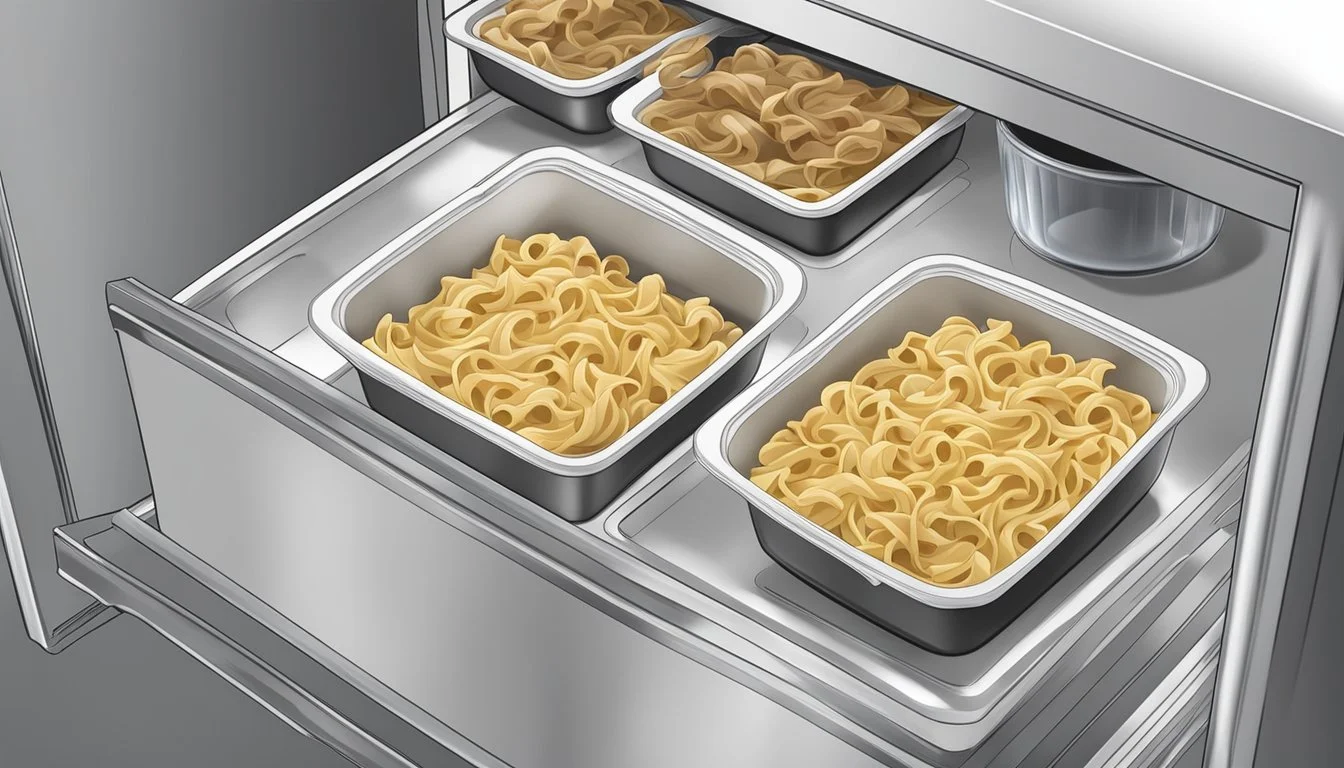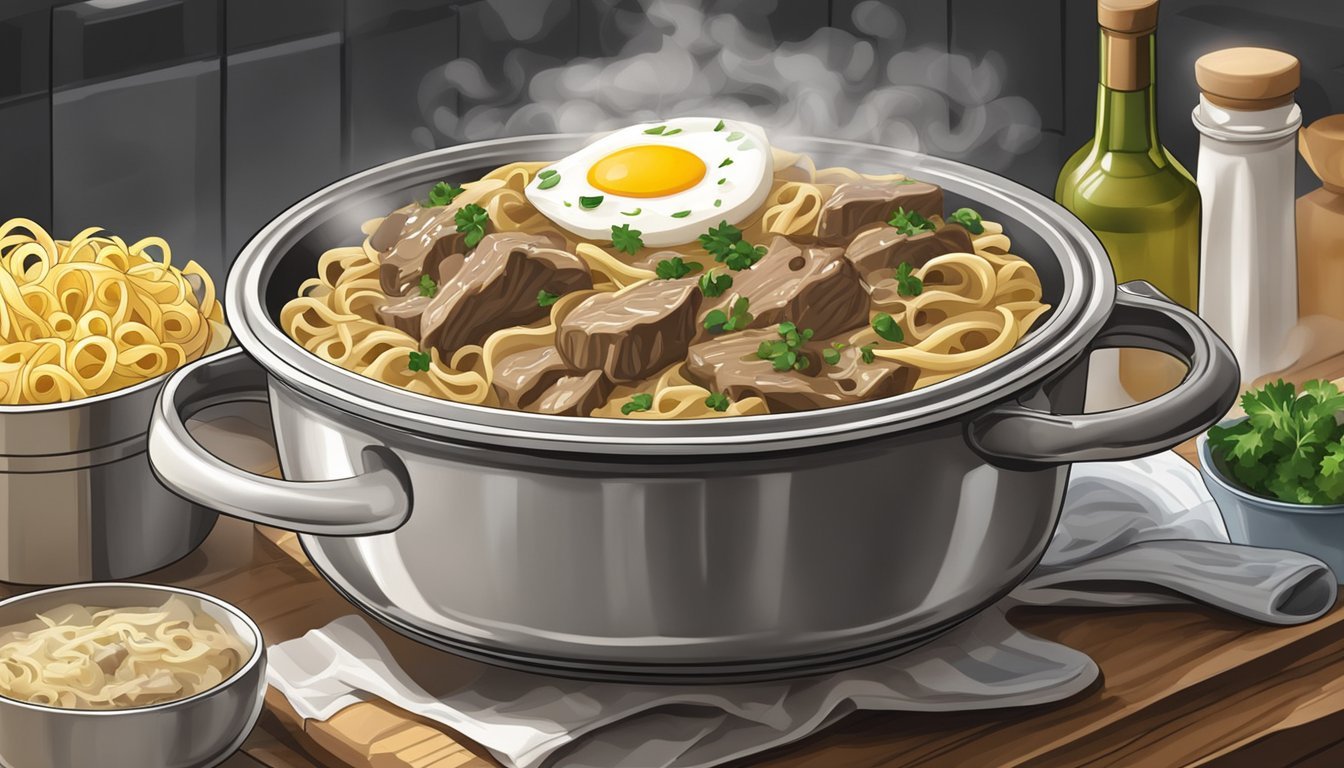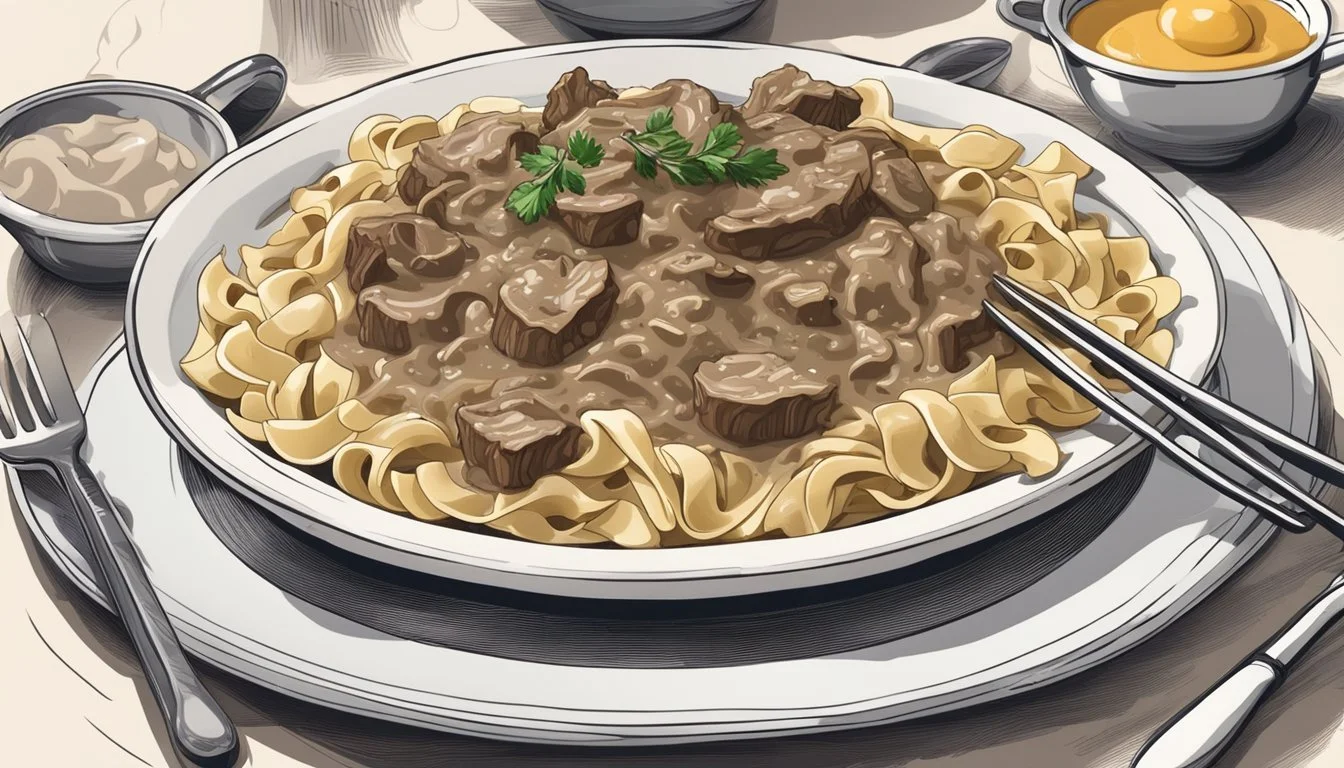How Long Does Beef Stroganoff with Egg Noodles Last?
Storage Tips and Guidelines
When it comes to beef stroganoff with egg noodles, proper storage is key to enjoying leftovers safely and maintaining their delicious flavor. Beef stroganoff with egg noodles can last in the refrigerator for up to 3-4 days if stored in an airtight container. This timeframe ensures the dish remains fresh and prevents the growth of harmful bacteria.
For those looking to extend the lifespan of this savory dish, freezing is an excellent option. Beef stroganoff can be frozen for up to 3 months without significant loss of taste or texture. To reheat, thaw it in the refrigerator overnight and then warm it on the stove or in the microwave.
Understanding these storage guidelines can help you make the most of your beef stroganoff leftovers, reducing waste and enjoying every bite. Whether you're making a big batch for meal prep or just enjoying the convenience of leftovers, following these storage tips will ensure your beef stroganoff remains safe and delicious.
Overview of Beef Stroganoff
Beef Stroganoff, known for its rich and creamy sauce, is a classic dish that has become a staple comfort food in many households. It combines tender beef, sautéed mushrooms, and a savory sauce.
History and Origin
Beef Stroganoff traces its origins back to mid-19th century Russia. Named after the Stroganov family, the dish became popular in Russian haute cuisine. Originally, it consisted of sautéed beef served with a mustard sauce and topped with smetana (a type of sour cream).
The recipe gained international acclaim in the early 20th century. It was introduced to Western Europe and America by Russian émigrés, evolving to include ingredients like mushrooms and onions. Its adaptability helped it gain popularity worldwide.
Popularity and Variations
Today's Beef Stroganoff comes in various adaptations. Traditional recipes use cuts like tenderloin or sirloin, but modern versions often substitute with cheaper cuts. Commonly, it's served over egg noodles, rice, or mashed potatoes.
Variations extend beyond the classic recipe. Some prefer adding different vegetables, such as bell peppers, or switching beef for chicken or pork. Other regional adaptations appear in countries like Brazil and Japan, showcasing the dish’s versatility.
In conclusion, Beef Stroganoff's rich history and numerous adaptations have cemented its place as a beloved, versatile comfort food.
Essential Ingredients
Creating a delicious beef stroganoff with egg noodles requires choosing the best types of beef, enhancing flavors with key ingredients, and selecting the right noodles to complement the dish.
Types of Beef Used
Quality beef is crucial in beef stroganoff. Tender cuts such as sirloin or tenderloin are preferred for their softness and quick cooking. These cuts require minimal cooking time to remain tender. Alternatively, ground beef can provide a budget-friendly and still tasty option, though it may alter the texture. When using tougher cuts, like chuck roast, cooking them longer in a slow cooker or pressure cooker helps achieve tenderness.
Key Flavor Enhancers
Essential flavor enhancers elevate beef stroganoff. Onions and garlic start the dish with a savory base, often sautéed in butter until fragrant and soft. Mushrooms contribute an earthy richness. Sour cream adds a creamy tang, balancing the flavors. Beef broth, Worcestershire sauce, and Dijon mustard bring depth and a slight tanginess. Salt and black pepper are fundamental for seasoning, ensuring each component's flavors stand out.
Noodle Considerations
Egg noodles are the traditional choice for beef stroganoff, prized for their firm texture and ability to hold the sauce. Cook them according to the package instructions, aiming for al dente to avoid mushiness when mixed with the stroganoff. Other pasta types can be used in a pinch, such as fettuccine or pappardelle, but they may not capture the classic feel. Ensure noodles are cooked separately and combined just before serving for the best texture.
Preparation and Cooking Instructions
Beef stroganoff with egg noodles involves creating a rich sauce with tender beef and combining it with cooked noodles. The key steps include preparing the sauce, cooking the noodles, and blending everything together in a balanced way.
Beef Stroganoff Sauce
The sauce begins with heating olive oil in a skillet over medium heat. Season steak strips with salt and pepper, then brown each side for about 4 minutes. Remove the steak and keep it warm.
Sauté diced onions and mushrooms in the same skillet until the onions turn translucent and the mushrooms are soft, usually 8-10 minutes. Add minced garlic and sauté for another minute. Stir in flour to create a roux, cooking for 1-2 minutes to eliminate the raw flour taste.
Pour in beef broth gradually, whisking continuously to avoid lumps. Add Worcestershire sauce and Dijon mustard for flavor. Bring the mixture to a gentle simmer, stirring constantly until it thickens. Return the browned beef to the skillet and simmer for 5 minutes, ensuring the beef is tender.
Cooking the Noodles
In a large pot, bring salted water to a rapid boil. Add egg noodles and cook until al dente, usually 7-9 minutes, depending on the brand. Stir occasionally to prevent sticking.
Drain the noodles thoroughly using a colander and set aside. Maintaining the right texture for the noodles is crucial for the final dish; overcooked noodles may become too soft and lose their structure.
Combining Ingredients
With the sauce and noodles ready, the final step involves combining them while ensuring a balanced flavor. Transfer the cooked noodles into the skillet with the beef stroganoff sauce. Gently mix to coat the noodles evenly with the sauce.
Simmer together for an additional 2-3 minutes, allowing the flavors to meld. Adjust seasoning if necessary by adding more salt and pepper to taste. Serve the beef stroganoff hot, making sure the noodles are thoroughly coated with the rich, creamy sauce for the best experience.
Proper Storage Techniques
Proper storage is crucial for maintaining the quality and safety of beef stroganoff with egg noodles. Key factors include airtight containers, refrigeration, freezing, and correct reheating methods.
Refrigeration Guidelines
Beef stroganoff with egg noodles should be stored in an airtight container to prevent contamination and moisture loss.
Refrigerate within two hours of cooking to minimize bacterial growth. The fridge should be set to 40°F (4°C) or lower. When stored correctly, the dish can last 3-4 days in the refrigerator.
Always reheat leftovers to an internal temperature of 165°F (74°C) to ensure safety. Place smaller portions in shallow containers to cool quickly in the fridge.
Freezing and Thawing
Freezing beef stroganoff with egg noodles can extend its shelf life up to three months. Use airtight bags or containers designed for freezing to prevent freezer burn.
Label each container with the date of freezing for easy tracking.
Thaw frozen stroganoff in the refrigerator, not at room temperature, to avoid bacterial growth. Plan for 24 hours of thawing time in the fridge.
Once thawed, reheat on the stove or in a microwave until it reaches an internal temperature of 165°F (74°C). Never refreeze leftovers after they have been thawed.
Shelf Life and Quality Maintenance
Beef stroganoff with egg noodles can last for up to 4 days when stored in the refrigerator. Proper storage techniques and using fresh ingredients can significantly influence the shelf life and overall quality.
Identifying Freshness
Freshness Indicators:
Fresh beef should be red with no discoloration.
Fresh mushrooms should be firm and free from dark spots.
Onions should be firm and without sprouts.
Proper Storage:
After cooking, beef stroganoff should be cooled quickly.
Store the dish in an airtight container.
Keep it in the refrigerator at or below 40°F (4°C).
Quality Maintenance:
Beef stroganoff's buttery, creamy sauce remains best when reheated gently.
Stir well during reheating to maintain a smooth consistency.
Garnish with fresh parsley before serving for enhanced flavor and presentation.
Serving Suggestions and Pairings
When serving beef stroganoff with egg noodles, the right sides and pairings can elevate the meal, providing a well-rounded and delicious dining experience. Traditional and modern options cater to various tastes and preferences.
Traditional Sides
Traditional sides like buttered egg noodles complement beef stroganoff perfectly with their smooth texture and subtle flavor. Rice is another great option, absorbing the stroganoff sauce beautifully. Mashed potatoes can also be a hearty side, offering a creamy contrast to the savory meat.
For a pop of color and a touch of freshness, consider garnishing the dish with chopped parsley or chives. They not only enhance the presentation but also add a subtle, fresh taste. Green beans and asparagus, served simply with a bit of butter or olive oil, provide a nutritious and vibrant side that balances the richness of the stroganoff.
Modern Twists
For a more contemporary take, consider pairing the stroganoff with roasted vegetables like carrots, Brussels sprouts, or sweet potatoes. The caramelized edges and natural sweetness of the roasted veggies complement the dish well.
Alternatively, cauliflower rice offers a low-carb and modern pairing, absorbing the flavors while adding a healthy touch. Garlic bread or French baguettes can be perfect for sopping up the delicious sauce, adding a crunchy texture to the meal.
For a unique twist, try serving the stroganoff over zucchini noodles or quinoa, offering a fresh, modern vibe and a nutritional boost. These inventive sides provide a contemporary flair while still harmonizing with the rich flavors of beef stroganoff.
Dietary Adaptations
Beef stroganoff with egg noodles can be adapted to meet various dietary needs. Key adaptations include gluten-free options and lower-fat substitutes.
Gluten-Free Options
For those avoiding gluten, replacing traditional egg noodles with gluten-free alternatives is essential. Gluten-free egg noodles are available in many grocery stores. Alternatively, rice noodles can provide a similar texture.
When thickeners are required, cornstarch or arrowroot powder can replace flour. Ensure that all broth and seasonings used are certified gluten-free. Adapting beef stroganoff in this way maintains its comforting nature while being safe for those with gluten sensitivities.
Lower-Fat Substitutes
To reduce fat content in beef stroganoff, lean cuts of beef such as sirloin or tenderloin are better choices. Replace part of the butter or oil with olive oil for a healthier fat option.
Substitute sour cream with plain Greek yogurt to cut down on fat while adding a slight tang. Low-fat milk combined with a small amount of flour can also help thicken the sauce without using heavy cream. These substitutions retain the dish's creamy richness with fewer calories and less fat.
Troubleshooting Common Issues
When preparing Beef Stroganoff with egg noodles, achieving the correct sauce consistency and ensuring tender meat are key aspects. By focusing on these areas, cooks can enhance both the taste and texture of this classic dish.
Sauce Consistency Adjustments
To achieve the ideal sauce consistency, adjustments may be necessary. If the sauce is too thin, it can be thickened using a slurry.
Combine 1 tablespoon of cornstarch with 2 tablespoons of cold water, and stir into the sauce. Allow it to simmer until desired thickness is reached. For a richer experience, use heavy cream instead of sour cream, but ensure it doesn't curdle by adding it off the heat.
When the sauce is overly thick, thin it out by adding small amounts of beef broth, stirring constantly until the right consistency is achieved. Another option is to use milk, which also adds a creamy texture without overpowering the flavors.
Meat Preparation Missteps
Proper preparation of the meat ensures it remains tender and flavorful. Start by tenderizing the beef with a meat pounder to a uniform thickness. This helps with even cooking and prevents toughness. Season the meat with salt and pepper before browning in a hot skillet.
Avoid overcooking the meat. Cook the beef strips on high heat for about 30 seconds on each side to keep them juicy. If overcooked, the meat may become tough, impacting the overall dish.
Additionally, choosing the right cut of meat, such as sirloin or tenderloin, can significantly affect tenderness. These cuts cook quickly and stay tender, making them ideal for Beef Stroganoff.
Additional Resources
When preparing Beef Stroganoff with egg noodles, it's helpful to consult established culinary resources. These include cookbooks and online tutorials, which provide expert recipes and practical techniques.
Recommended Cookbooks
Modern Comfort Food by Ina Garten features a detailed recipe for Beef Stroganoff, presenting step-by-step instructions and tips. Garten's approach emphasizes flavor and ease of preparation, making it ideal for home cooks.
The Joy of Cooking by Irma S. Rombauer offers a classic recipe that balances traditional techniques with contemporary adjustments. This cookbook is renowned for its authoritative recipes and reliable guidance.
The Food Lab: Better Home Cooking Through Science by J. Kenji López-Alt delves into the science of cooking, providing insights that help improve the texture and flavor of Beef Stroganoff. It's perfect for those who want to understand the why behind each step.
Online Tutorials
YouTube provides a wealth of video tutorials that can make preparing Beef Stroganoff more accessible. Channels like "Tasty" and "Bon Appétit" offer easy-to-follow videos that break down complex steps into manageable tasks.
Websites such as Allrecipes and Delish offer written recipes alongside instructional videos. These resources not only show the cooking process but also provide variations and tips from other home cooks.
Cooking blogs like Smitten Kitchen and The Kitchen Girl also feature recipes with photos and detailed instructions. These blogs often include personal anecdotes and practical tips, making the cooking experience more relatable and enjoyable.

